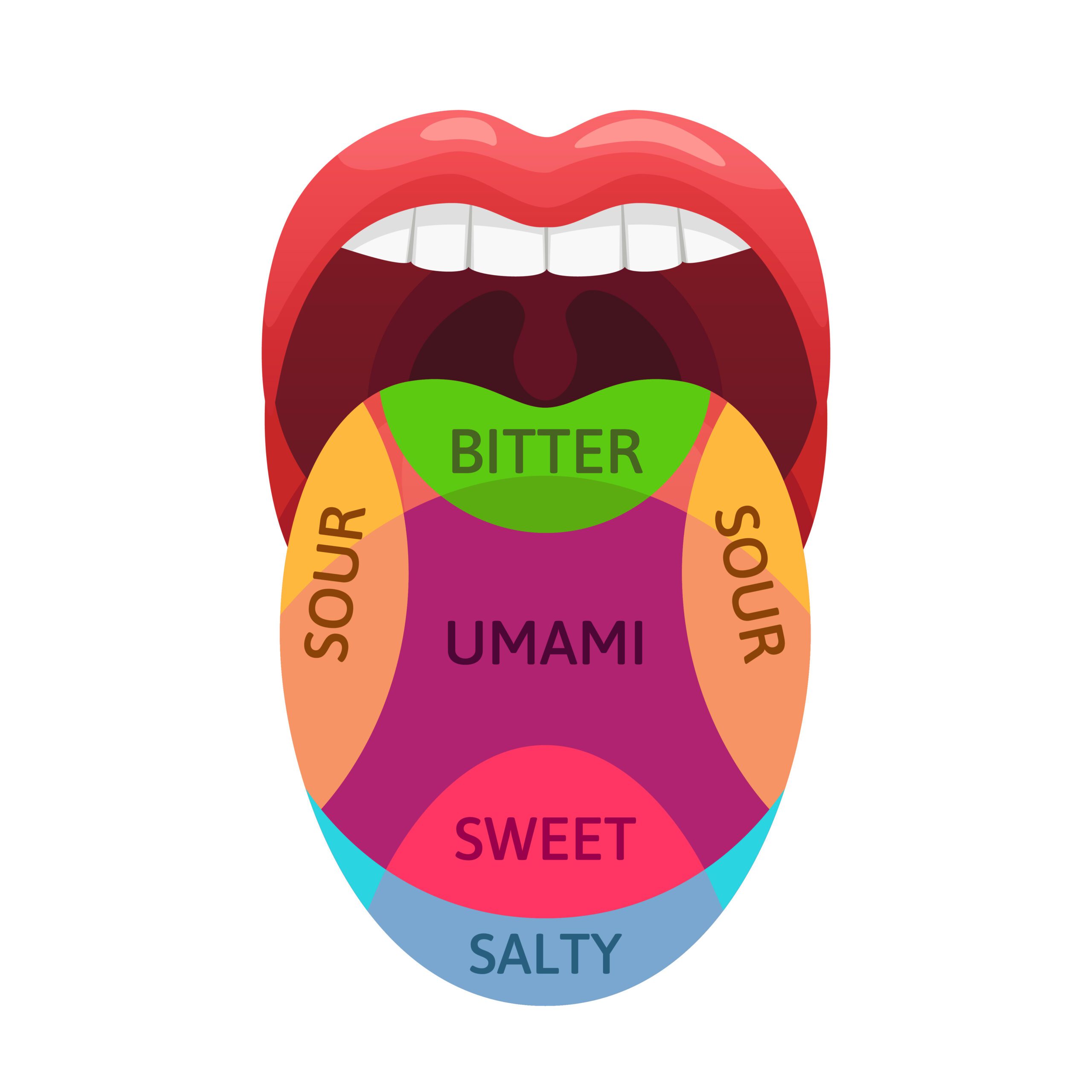The Power of Palate: Enhancing Weight Loss Through Taste Perception
January 18, 2024
 931
931 
In the world of weight loss, one factor that often flies under the radar is taste perception.
It’s a powerful influencer, deeply interwoven into our eating habits and dietary choices.
This sensory experience extends beyond mere enjoyment – it plays a critical role in how we approach food, impacting both psychological and physiological responses.
In this blog, we’ll explore the fascinating world of taste perception and uncover how it significantly shapes our journey towards weight loss, revealing that what tantalizes our taste buds goes much deeper than just flavor.

Taste perception is a complex sensory process that starts in our taste buds but resonates throughout our entire body.
Biological Mechanisms of Taste
Taste perception begins when taste buds on the tongue come into contact with food.
These taste buds, which are sensory organs containing taste receptor cells, detect five basic tastes: sweet, salty, bitter, sour, and umami.
When these receptors are stimulated, they send signals to the brain, which interprets them as specific flavors.
Individual Variations in Taste
Not everyone experiences taste in the same way.
Factors like genetics, age, and even cultural background can influence how we perceive different flavors.
Some people may have a heightened sensitivity to certain tastes, like bitterness, while others may find certain flavors more appealing.
These individual differences play a significant role in shaping our food preferences, which in turn affects our dietary habits and weight management strategies.

The relationship between the flavors we perceive and our appetite is a fascinating dance of sensory experiences and biological responses.
Influence of Different Flavors on Appetite and Satiety
Each basic taste – sweet, salty, bitter, sour, and umami – plays a unique role in how we experience food and, subsequently, in our appetite regulation.
Sweet and salty tastes are often associated with increased appetite.
These flavors can trigger a sense of reward and pleasure in the brain, encouraging further consumption.
Bitter and sour flavors, on the other hand, may have an opposite effect, sometimes serving as a natural appetite suppressant.
These tastes can signal caution, reducing the desire to overeat.
Umami, known as the savory taste, is particularly interesting as it is often linked to satiety.
Foods with umami flavors can help in feeling full faster and for longer periods.
Research on Taste and Hunger
Several studies have explored how different tastes impact hunger and satiety hormones.
For instance, sweetness has been shown to stimulate insulin release, which can affect hunger levels.
Research also suggests that incorporating a variety of flavors in a meal can lead to better appetite control, preventing overeating.

Modifying one’s taste preferences can be a powerful strategy in the pursuit of weight loss, steering dietary habits towards healthier choices.
Shifting Away from Sweet and Salty Preferences
Reducing a preference for overly sweet or salty foods can significantly impact weight loss efforts.
Gradually decreasing the amount of added sugars and salt in the diet can help reset taste preferences over time, making healthier foods more appealing and satisfying.
This shift can lead to a natural reduction in calorie intake, as foods high in sugar and salt are often calorie-dense and low in nutritional value.
Strategies for Taste Modification
Introducing a wider variety of flavors can help in modifying taste preferences.
This includes incorporating more bitter, sour, and umami flavors into meals.
Experimenting with herbs, spices, and other natural flavor enhancers can make healthy foods more palatable, reducing the reliance on sugar and salt for taste.
Mindful eating practices, where one focuses on savoring each flavor in a meal, can also aid in retraining the palate to appreciate the natural tastes of whole foods.

In the journey towards a balanced and healthy relationship with food, the practice of mindful eating emerges as a transformative approach.
It’s not just about what we eat, but also how we eat, with an emphasis on fully experiencing and savoring the flavors of our food.
Embracing Mindful Eating for Weight Control
Mindful eating is about being fully present during meals, paying close attention to the flavors, textures, and aromas of the food, as well as to our body’s hunger and fullness cues.
This practice encourages a deeper appreciation of meals, allowing us to savor every bite and, in turn, often leading to more satisfaction with smaller portions.
By focusing on the sensory experience of eating, we become more attuned to our body’s true needs, helping to avoid overeating and making healthier food choices.
Heightened Flavor Awareness and Its Benefits
A key component of mindful eating is heightened awareness of taste.
This awareness helps in recognizing and appreciating the subtle flavors of natural, wholesome foods, often overshadowed by the strong tastes of processed foods.
As one becomes more mindful of the flavors, there is often a natural shift towards foods that are not only flavorful but also nutritionally rich and beneficial for weight management.
Heightened taste awareness can lead to better portion control.
When we slow down and truly taste our food, we’re more likely to notice when we’re full, reducing the likelihood of overeating.

A key challenge in healthy eating and weight loss is making nutritious food not only beneficial but also delicious.
Enhancing the flavor of food without adding excessive calories is an art that can significantly improve diet quality and support weight loss goals.
Tips for Flavor Enhancement
Utilize a variety of herbs and spices.
These natural flavor enhancers can transform a simple dish into a culinary delight without adding any significant calories.
Experiment with combinations like basil, oregano, cinnamon, cumin, and turmeric to discover new taste profiles.
Embrace the use of natural flavorings like lemon juice, vinegar, and garlic.
These ingredients add a burst of flavor and can make even the simplest of foods more palatable and enjoyable.
Consider the use of low-calorie cooking methods like grilling, roasting, and steaming, which can bring out the natural flavors of foods, particularly vegetables and lean meats.
Role of Culinary Techniques
Culinary techniques play a crucial role in enhancing flavor.
For example, roasting vegetables can caramelize their natural sugars, enhancing their sweetness and depth of flavor.
Sautéing spices and herbs before adding them to dishes can intensify their flavors, making a dish more satisfying and reducing the need for additional salt or fat.
The science of flavor and its influence on weight loss is a fascinating and often underappreciated aspect of dietary management.
Understanding and harnessing taste perception can be a game-changer in weight loss strategies.
Significance of Taste Perception
Recognizing how different flavors impact our appetite and food choices is vital.
By modifying and enhancing our taste preferences, we can guide our diet towards healthier options.
Employing mindful eating practices and flavor appreciation can lead to more enjoyable and satisfying meals, which are crucial for sustainable weight management.
A Comprehensive Approach to Weight Management
We encourage readers to explore and adjust their flavor preferences.
Experiment with herbs, spices, and healthy cooking techniques to discover satisfying, low-calorie ways to enjoy food.
Embrace the journey of developing a refined palate as part of a comprehensive approach to healthy weight management.
Remember, losing weight doesn’t have to mean losing flavor.
In conclusion, by understanding the power of taste and utilizing smart, flavor-enhancing strategies, we can make healthy eating a delicious and integral part of our weight loss journey.

A new study suggests that a widely used sugar substitute found in diet sodas, chewing gum, and low-sugar yogurt may elevate insulin levels. This could increase the long-term risk of heart disease. “Artificial sweeteners have infiltrated nearly all types of food, making it crucial to understand their long-term health effects,” said Yihai Cao, senior author […]

Diet Coke has long been a fan-favorite among soda lovers who want a fizzy, guilt-free alternative to traditional soft drinks. While its zero-calorie, zero-sugar label makes it seem like a healthier option, the reality is far more concerning. Despite its undeniable popularity, Diet Coke’s nutritional profile has raised red flags among health experts for years. […]

New study shows that embracing an anti-inflammatory, plant-forward diet can support cognitive function and help reduce the risk of dementia. What You Eat Shapes Your Brain The food you eat doesn’t just impact your body—it also affects your brain. Research suggests that eating an anti-inflammatory, plant-based diet can help improve memory, focus, and overall brain […]